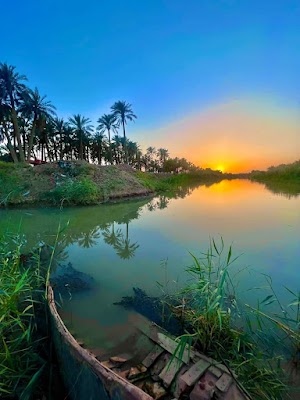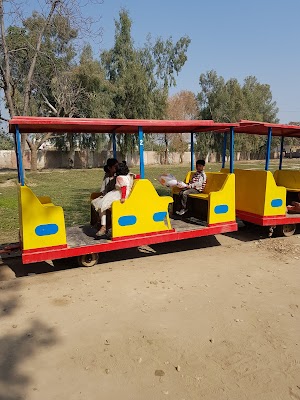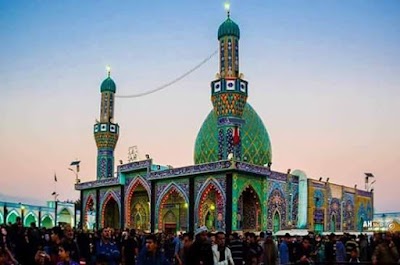Shatt al-Arab (شط العرب)
Overview
Overview of Shatt al-Arab
Shatt al-Arab, known as شط العرب in Arabic, is a remarkable river located in the southern region of Iraq, forming a natural boundary between Iraq and Iran. This waterway is a confluence of the Tigris and Euphrates rivers, flowing southward into the Persian Gulf. The name "Shatt al-Arab" translates to "River of the Arabs," and it has historically been a vital artery for trade, culture, and agriculture in the region. For foreign travelers, this area embodies a landscape rich in history and natural beauty, inviting exploration and appreciation.
The river spans approximately 200 kilometers, featuring lush greenery along its banks, particularly in the Maysan Governorate. The surrounding landscapes are dotted with ancient archaeological sites, quaint villages, and bustling markets. Visitors will find the unique blend of nature and culture particularly captivating. As you stroll along the banks, you may encounter local fishermen casting their nets and families enjoying picnics under the shade of palm trees, offering a glimpse into the daily lives of the residents.
Historical Significance
Shatt al-Arab is steeped in history, having witnessed numerous civilizations flourish along its banks. The area has been inhabited since ancient times, with the Sumerians, Babylonians, and Persians all recognizing the importance of this river for irrigation and trade. The river served as a crucial waterway during the Iran-Iraq War in the 1980s, making it a site of strategic importance in modern history. As you explore the region, you can visit remnants of ancient settlements and hear stories from locals that echo the tales of the past.
The region is also home to the famous city of Al-Qurna, where travelers can see the confluence of the Tigris and Euphrates rivers. This area is not only historically significant but also a place of stunning natural beauty. The vibrant marshlands nearby, known as the Mesopotamian Marshes, are a UNESCO World Heritage site, teeming with diverse wildlife and endemic species, making it a paradise for birdwatchers and nature enthusiasts.
Local Culture and Cuisine
The culture surrounding Shatt al-Arab is a tapestry woven from various traditions, reflecting the rich heritage of the peoples who have inhabited the area. The local population is known for their hospitality and warmth, making travelers feel welcome in this enchanting region. Visiting local markets, or "souks," is a must, where you can find traditional handicrafts, spices, and textiles that showcase the artistry of the local artisans.
No visit to Shatt al-Arab would be complete without indulging in the local cuisine. The region is famous for its delicious seafood, fresh from the river, as well as traditional Iraqi dishes such as kebabs, dolma (stuffed vegetables), and biryani. Dining at a riverside restaurant while enjoying the sunset over the water creates a memorable culinary experience that tantalizes the taste buds and warms the heart.
Travel Tips
For travelers planning a visit to Shatt al-Arab, it is essential to be aware of the local customs and traditions. Dress modestly to respect the cultural norms, and always ask for permission before taking photographs of people or private property. It is advisable to travel with a local guide who can provide insights into the history and culture of the area, as well as ensure a safe and enjoyable experience.
As with any travel destination, be mindful of current events and ensure that your travel plans align with safety recommendations. Engaging with the local community, learning a few Arabic phrases, and being open to new experiences will enrich your journey through this extraordinary region of Iraq. Shatt al-Arab is not just a river; it is a living testament to the resilience, culture, and beauty of a land that holds a special place in the heart of its people.






